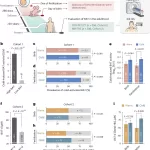
The COVID-19 pandemic has demonstrated that the impact of health emergencies is not just limited to health. Economies and social welfare have been majorly impacted. Globally, risks from natural and man-made hazards are also likely to result in major and frequent health emergencies given the weakened systems that the pandemic would leave, and the looming threats from climate change.
“The roadmap aims to protect the vulnerable and economies from the impact of public health emergencies by strengthening national and regional health security and health system resilience,” said Dr Poonam Khetrapal Singh, Regional Director, WHO South-East Asia, at the ongoing Seventy-fifth Regional Committee Session here.
The Regional Strategy Roadmap on Health Security and Health System Resilience for Emergencies 2023-2027 has been formulated after detailed consultations with Member countries and experts, and incorporates global and regional priorities and recommendations. It seeks to boost capacities to anticipate, prevent and manage health emergencies while maintaining essential health services through enhanced governance and collaboration within and across countries in the Region.
Dr Khetrapal Singh said that a Regional Health Emergency Council (RHEC) comprising of Heads of Member countries of the WHO South-East Asia Region, is being planned in line with WHO Director-General Dr Tedros’ proposal of the Global Health Emergency Council. It will ensure the engagement and commitment of the highest-level political leadership for preparedness and response to health emergencies in the Region to save lives and livelihood. The detailed terms of reference and operational modalities of the RHEC will be worked out in consultation with the Member States in due course.
The Region is also rolling out ‘WHO South-East Asia Regional Roadmap for Diagnostic Preparedness, Integrated Laboratory Networking and Genomic Surveillance 2023-2027’, developed to provide Member countries a range of policy options to develop sustainable strategies to improve their national laboratories and prepare their laboratory systems to improve surveillance and respond more effectively to emerging and re-emerging diseases, and other potential public health emergencies.
These roadmaps would help Member countries develop or update their National Action Plans on Health Security and strengthen whole-of-government and whole-of-society approach to enable more effective public health emergency preparedness, readiness, and response.
The Regional Strategy Roadmap on Health Security and Health System Resilience for Emergencies seeks to strengthen health security systems to reduce risks, detect early, prevent, and respond to public health emergencies as well as recover from its impact. It also seeks to strengthen governance, financing and enabling functions for emergency preparedness and surge response.
Importantly, the roadmap aims at strengthening regional alert, preparedness, and response systems, through improved regional collaboration.
The roadmap is expected to assist countries prevent or mitigate the multidimensional impact of emergencies on people and providers, protect the vulnerable, while ensuring that resilient health systems are capable of rapid recovery not just to “normalcy” but to be “built back better” post-emergency.
“A robust health system with well-developed building blocks leading to service provision with universal coverage, is not only foundational for health security but also critical for fulfilling the surge in service demand, continuity of essential services during emergencies, and for the system to bounce back to normalcy rapidly following an emergency – the three key characteristics of a resilient health system,” said Dr Khetrapal Singh.











